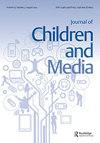Under the influence of (alcohol)influencers? A qualitative study examining Belgian adolescents’ evaluations of alcohol-related Instagram images from influencers
IF 2.1
3区 心理学
Q2 COMMUNICATION
引用次数: 4
Abstract
ABSTRACT Influencers are important socialization agents among adolescents. There are rising concerns that influencers glamorize their alcohol behaviors and promote brands on Instagram. While exposure to alcohol messages influences adolescents’ alcohol use, it remains unclear how adolescents evaluate influencers’ alcohol images. We conducted 10 focus group interviews with 47 adolescents (Mage = 16.21; SD = 1.22). Our results demonstrated that adolescents frequently encounter images of influencers who hold alcoholic beverages, provide positive reviews for brands, or promote their own beverages. Additionally, building on the Message Interpretation Process model, we examined how individuals affectively (i.e. message desirability) and cognitively (i.e. realism, similarity) evaluate these alcohol images. Our results suggest that adolescents enjoy viewing images of influencers who depicted positive alcohol-related outcomes, highlighted their luxurious lifestyles, and were transparent about their partnership with alcohol brands. Only upon explicitly encouraging them to think aloud about the realism of and similarity to these images; and through discussions with their friends, they became more skeptical and perceived influencers’ images to be inauthentic. Where these critical evaluations took place, the persuasive effects seemed to diminish. Overall, our findings suggest that peer-led discussions and think-aloud procedures may be promising tools for media literacy interventions. IMPACT SUMMARY Prior state of knowledge Influencers use Instagram to memorialize alcohol drinking and recommend brands to adolescents. Exposure to alcohol images, however, has been demonstrated to influence offline alcohol cognitions and behaviors. Novel contributions Extending the Message Interpretation Process model, our qualitative study indicated that stylistic features and emotional appeals in influencers’ alcohol images drive affective evaluations, while the valence, setting, and commercial transparency determine cognitive evaluations. Critical cognitive evaluations overturn positive affective evaluations. Practical Implications The study showed that peer-led discussions and think-aloud procedures may be useful tools in media literacy trainings to activate adolescents’ critical cognitive evaluations. These cognitive evaluations would in turn enable adolescents to regulate their affective evaluations.受(酒精)影响?一项定性研究调查了比利时青少年对网红发布的与酒精有关的Instagram图片的评价
影响者是青少年重要的社会化推动者。越来越多的人担心网红会美化自己的饮酒行为,并在Instagram上宣传品牌。虽然接触酒精信息会影响青少年的酒精使用,但青少年如何评估影响者的酒精图像仍不清楚。我们对47名青少年进行了10次焦点小组访谈(Mage = 16.21;Sd = 1.22)。我们的研究结果表明,青少年经常会遇到网红的照片,这些网红拿着酒精饮料,为品牌提供积极的评价,或者推销自己的饮料。此外,在信息解释过程模型的基础上,我们研究了个体如何在情感上(即信息的可取性)和认知上(即现实性、相似性)评估这些酒精图像。我们的研究结果表明,青少年喜欢观看网红的照片,这些网红描绘了与酒精有关的积极结果,突出了他们奢侈的生活方式,并对他们与酒精品牌的合作关系保持透明。只有明确地鼓励他们大声思考这些图像的现实性和相似性;通过与朋友的讨论,他们变得更加怀疑,认为网红的形象是不真实的。在这些批判性评价发生的地方,说服效果似乎减弱了。总的来说,我们的研究结果表明,同伴主导的讨论和出声思考程序可能是媒体素养干预的有希望的工具。影响者使用Instagram来纪念饮酒,并向青少年推荐品牌。然而,接触酒精图像已被证明会影响离线酒精认知和行为。我们的定性研究扩展了信息解释过程模型,表明影响者的酒精图像的风格特征和情感诉求驱动情感评价,而价、环境和商业透明度决定认知评价。批判性认知评价推翻了积极的情感评价。本研究表明,同伴主导的讨论和大声思考程序可能是媒体素养培训中激活青少年批判性认知评估的有用工具。这些认知评价反过来又使青少年能够调节他们的情感评价。
本文章由计算机程序翻译,如有差异,请以英文原文为准。
求助全文
约1分钟内获得全文
求助全文

 求助内容:
求助内容: 应助结果提醒方式:
应助结果提醒方式:


